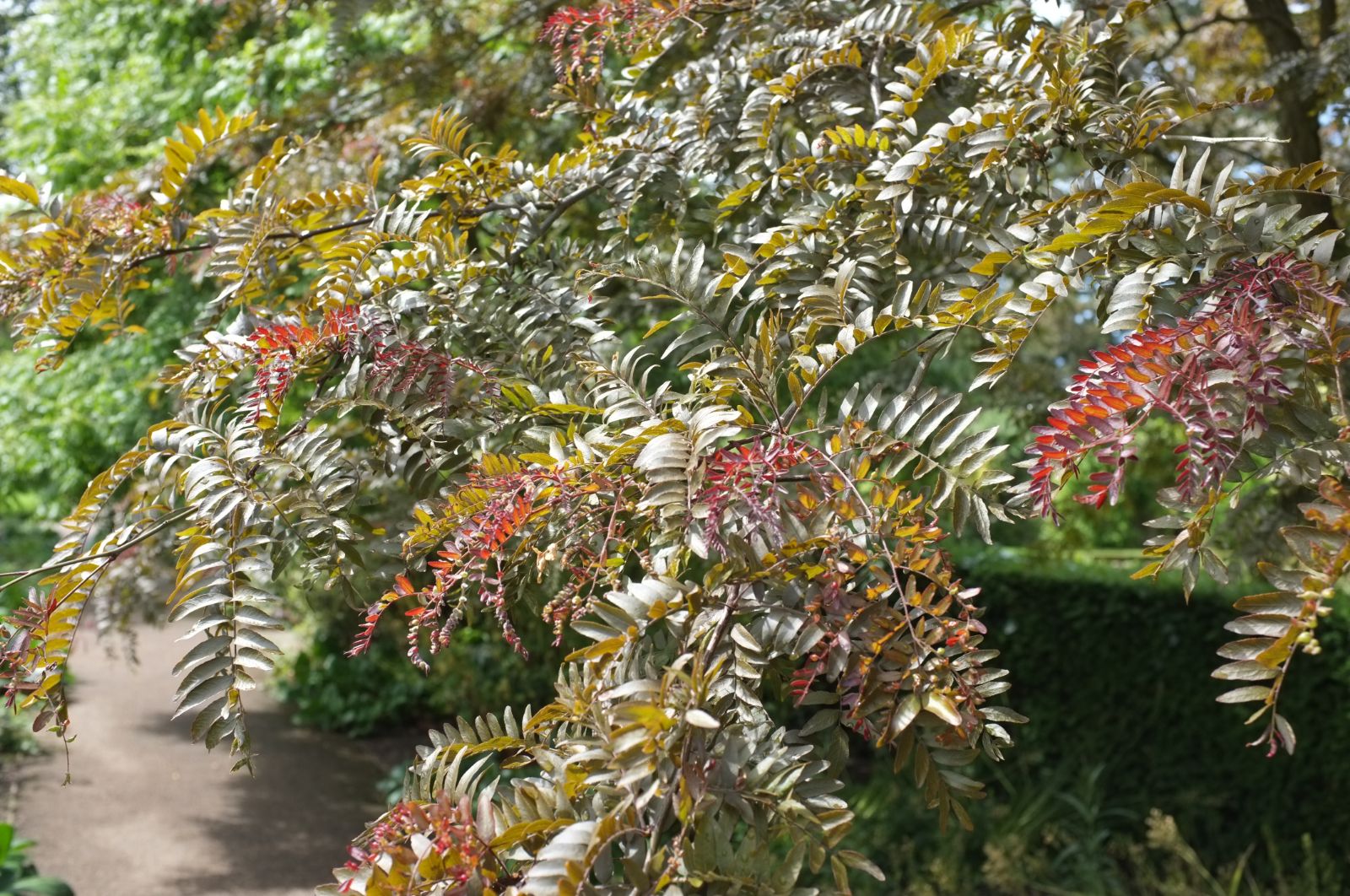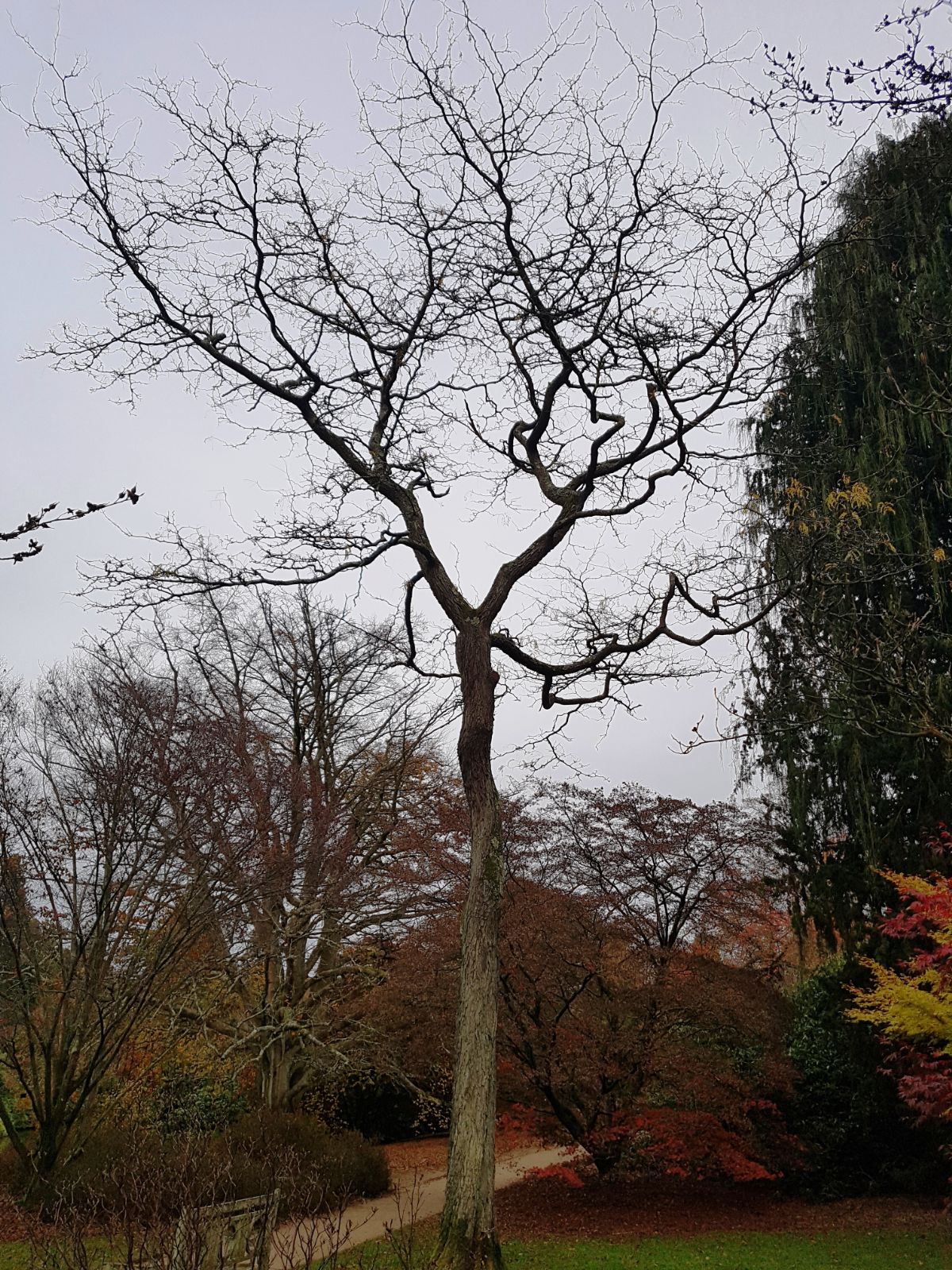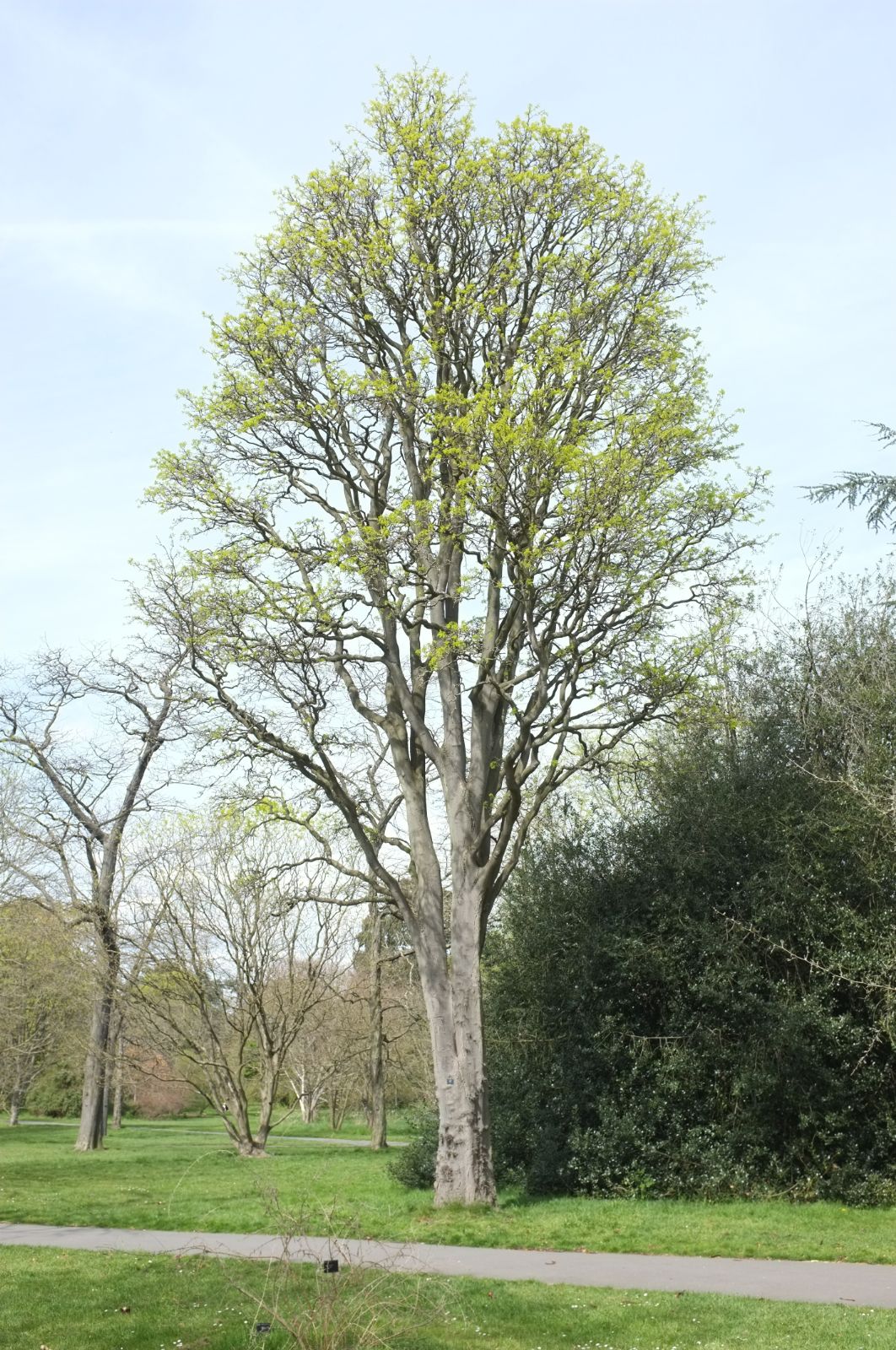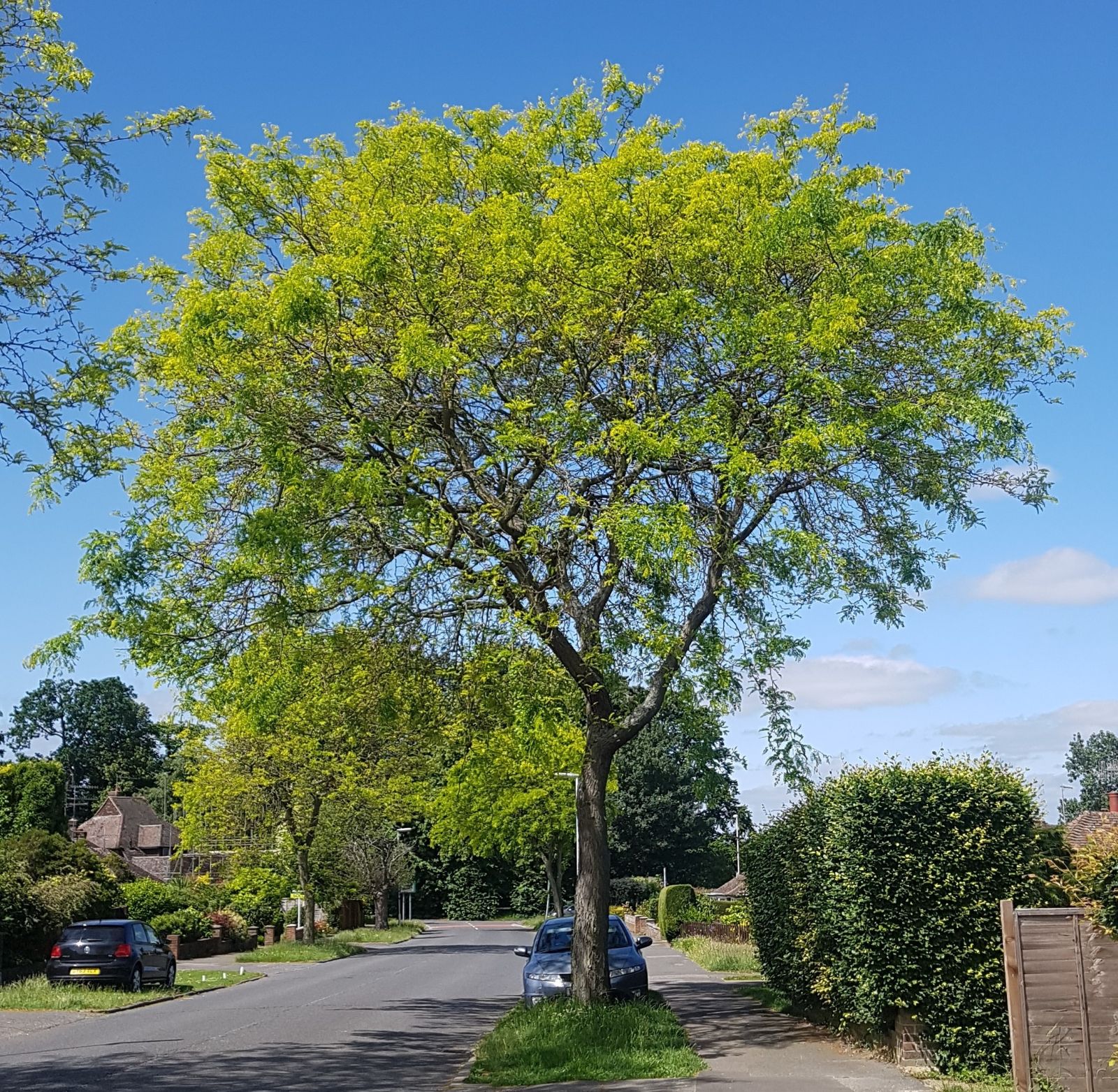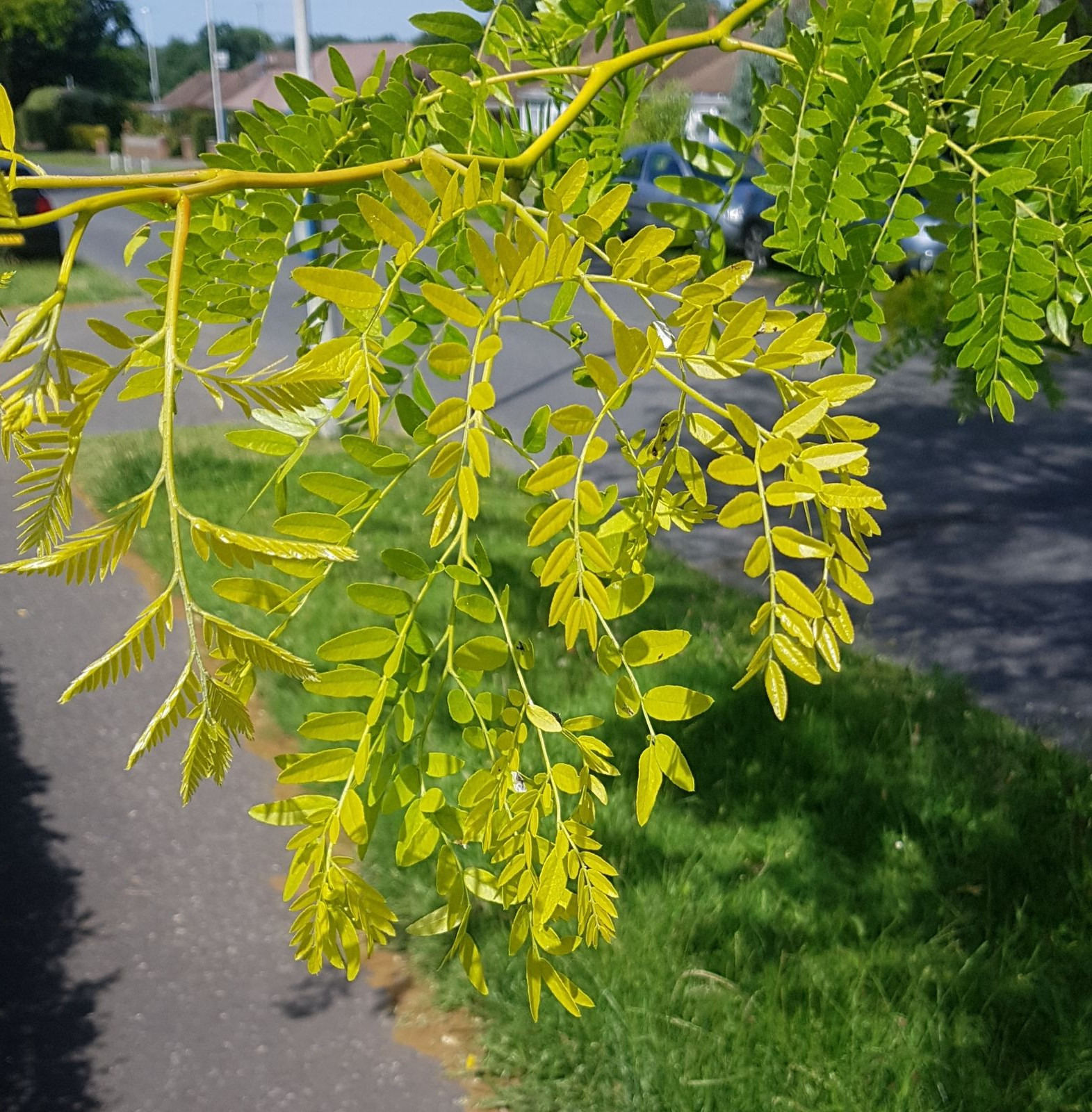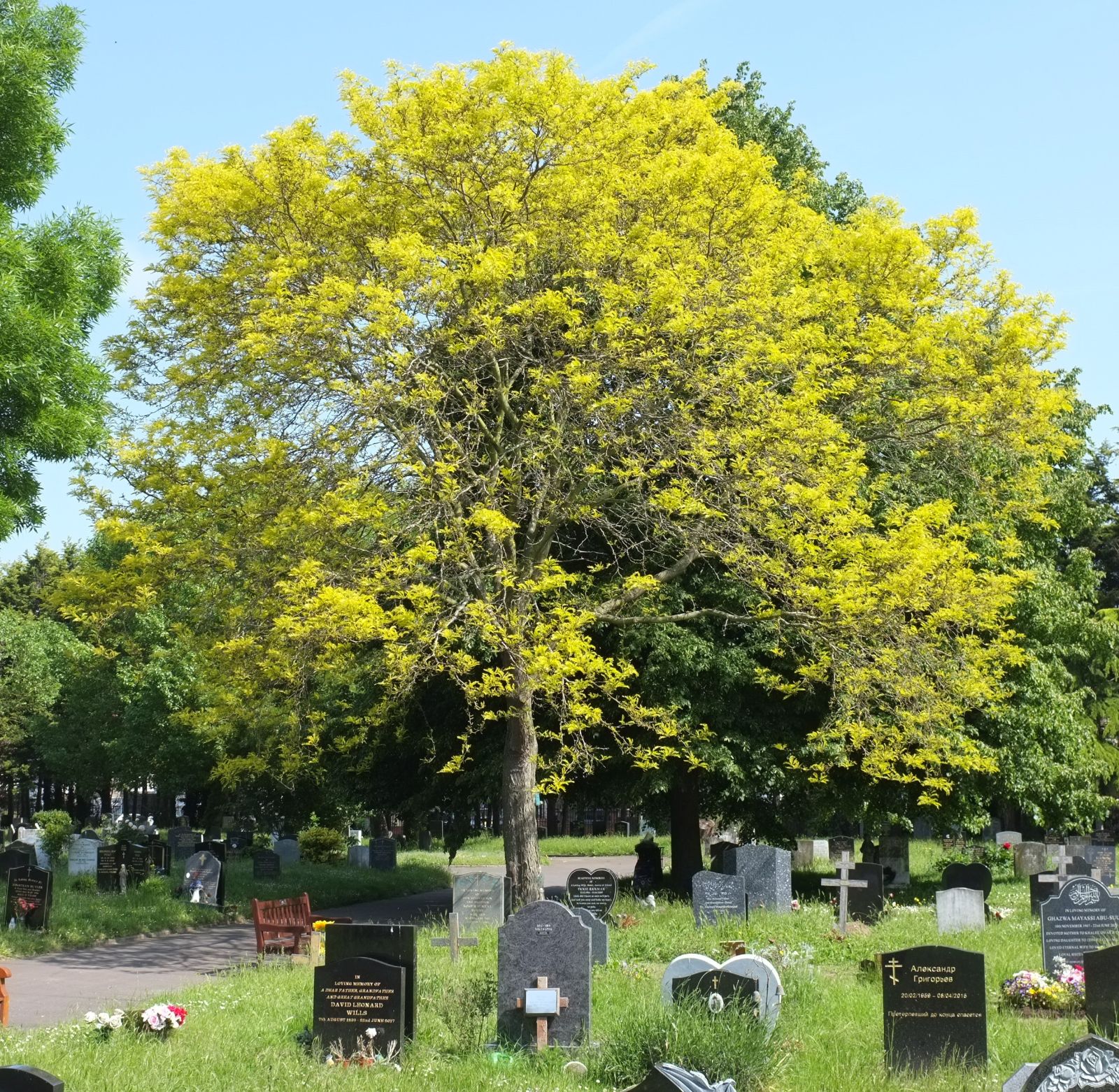Gleditsia triacanthos
Credits
Article from Bean's Trees and Shrubs Hardy in the British Isles
Recommended citation
'Gleditsia triacanthos' from the website Trees and Shrubs Online (treesandshrubsonline.
Genus
Common Names
- Honey
A tree reaching in the wild 140 ft in height, with a trunk up to 5 or 6 ft in diameter, both it and the branches more or less armed with stout, sharp spines 3 to 12 in. long, and branched. Young shoots slightly downy at the base only; spines when present on them simple or three-forked. Leaves 4 to 8 in. long, either simply or doubly pinnate, the latter confined to vigorous leading shoots; the leaves of the short, flowering twigs are invariably simply pinnate. Leaflets on each pinnate leaf (or section of bipinnate one) fourteen to thirty-two, 1⁄2 to 11⁄2 in. long, 3⁄16 to 5⁄8 in. wide, oblong-lanceolate, mostly rounded at the apex, wavy or shallowly toothed at the margin, glossy dark green; both surfaces at first downy. Male flowers green, crowded on downy, often clustered racemes about 2 in. long; female racemes few-flowered. Fruits more or less scimitar-shaped, 1 to 11⁄2 ft long, 1 to 11⁄2 in. wide, dark shining brown.
Native of central N. America; introduced in 1700. The honey locust is the best of the genus in this country, and deserves to be more commonly planted than it is, not only for its interest but for the beautiful fern-like foliage, which turns a clear bright yellow in autumn. The spines are not so formidably developed in this country as on the continent, nor do they develop in woods or shady spots as they do in places fully exposed. It only occasionally bears fruit with us, never with the freedom and regularity seen in more sunny climates, e.g., in the south of France. A tree well laden with dry pods, rattling with every fitful movement of the air, makes rather a weird sound in the dusk. The popular name refers to the likeness of the tree in foliage to the locust (Robinia), and to the thick, succulent, sweetish pulp in which the seeds are set.
There are two large specimens of G. triacanthos at Kew measuring 60 × 61⁄4 ft and 60 × 51⁄4 ft (1965) (see also f. inermis). Other examples measured recently are: St James’s Park, London, 58 × 5 ft (1963); Syon House, London, 50 × 33⁄4 ft (1967); Mote Park, Maidstone, Kent, 57 × 51⁄4 ft (1965); Avington House, Hants, 56 × 51⁄2 ft (1965); Wilton House, Wilts, 68 × 51⁄2 ft (1961); Pampisford, Cambs., 54 × 53⁄4 ft (1959).
From the Supplement (Vol. V)
specimens: Kew, pl. 1873, 74 × 63⁄4 ft, 70 × 53⁄4 ft and 75 × 7 ft (1980); St James’s Park, London, 72 × 53⁄4 ft (1979); Victoria Park, Hackney, London, fastigiate form, 60 × 51⁄4 ft + 23⁄4 ft (1980); Holland Park, London, fastigiate form, 50 × 51⁄2 ft (1981); Battersea Park, London, east end of Lake, 68 × 61⁄2 ft (1983); Mote Park, Maidstone, Kent, 74 × 63⁄4 ft (1984); Avington House, Hants, 63 × 61⁄4 ft (1977); University Botanic Garden, Cambridge, 80 × 71⁄4 ft (1984); Victoria Park, Bath, 82 × 131⁄4 ft at 2 ft, with four boles (1980).
f. inermis – specimens: Kew, 72 × 6 ft (1981); St James’s Park, London, 66 × 6 ft (1985); Mote Park, Maidstone, Kent, 74 × 63⁄4 ft (1984); University Botanic Garden, Cambridge, 79 × 7 ft (1982); Emmanuel College, Cambridge, 76 × 71⁄2 ft (1976); Westonbirt House, Glos., 66 × 7 ft (1982).
cv. ‘Nana’. – As remarked on page 291, the trees planted at Kew under this name are not dwarf. They measure 79 × 51⁄2 ft and 50 × 51⁄2 ft at 2 ft (1981).
cv. ‘Sunburst’. – Planted in 1961, this is 33 × 21⁄4 ft at Kew (1981).
'Bujotii' ('Pendula')
A very elegant, pendulous tree; branches and branchlets very slender; leaflets narrower than in the type, often mottled with white.'Elegantissima'
A variety of dense, shrubby habit with elegant foliage, raised by the nurseryman Charles Breton of Orleans around 1880. The original plant attained a height of about 13 ft in twenty-five years; an old plant at Wakehurst Place, Sussex, is about 25 ft high.
f. inermis (L.) Zab.
Synonyms
G. inermis L
Some trees appear never to bear thorns, and have been distinguished by this name; but unarmed plants are said to occur among batches of seedlings raised from thorn-bearing trees. In the USA, where the honey locust is much used as a street tree, unarmed trees are preferred, for obvious reasons. Many named clones of this nature are in commerce there, the best known being ‘Moraine’, patented in 1949. This is sterile, as are some of the others, the absence of pods being another merit so far as street-planting is concerned, in those countries where they are borne.The following specimens of the unarmed form have been recorded: Kew, 58 × 5{1/2} (1968); University Botanic Garden, Cambridge, 65 × 6{1/2} ft (1969); Pampisford, Cambs., 75 × 6{1/4} ft (1969).
'Nana'
The name G. t. var. nana was published by Henry in 1907, in reference to a tree growing at Kew. He described it as ‘a small, round-headed tree of compact habit with dark green foliage, and leaflets shorter and broader than in the type’. There are in fact three trees at Kew under this name. One, received from Simon-Louis Frères in 1888, is now (1970) 45 ft high; this may be the plant that Henry had in mind. The other two, of unknown provenance, are 43 and 52 ft high respectively. Henry suggested that this variant might be the same as the G. sinensis var. nana of Loudon.
'Sunburst'
Leaves golden yellow in spring, becoming green later; unarmed. Raised in the United States and patented in 1954. One of the most striking of golden-leaved trees.



